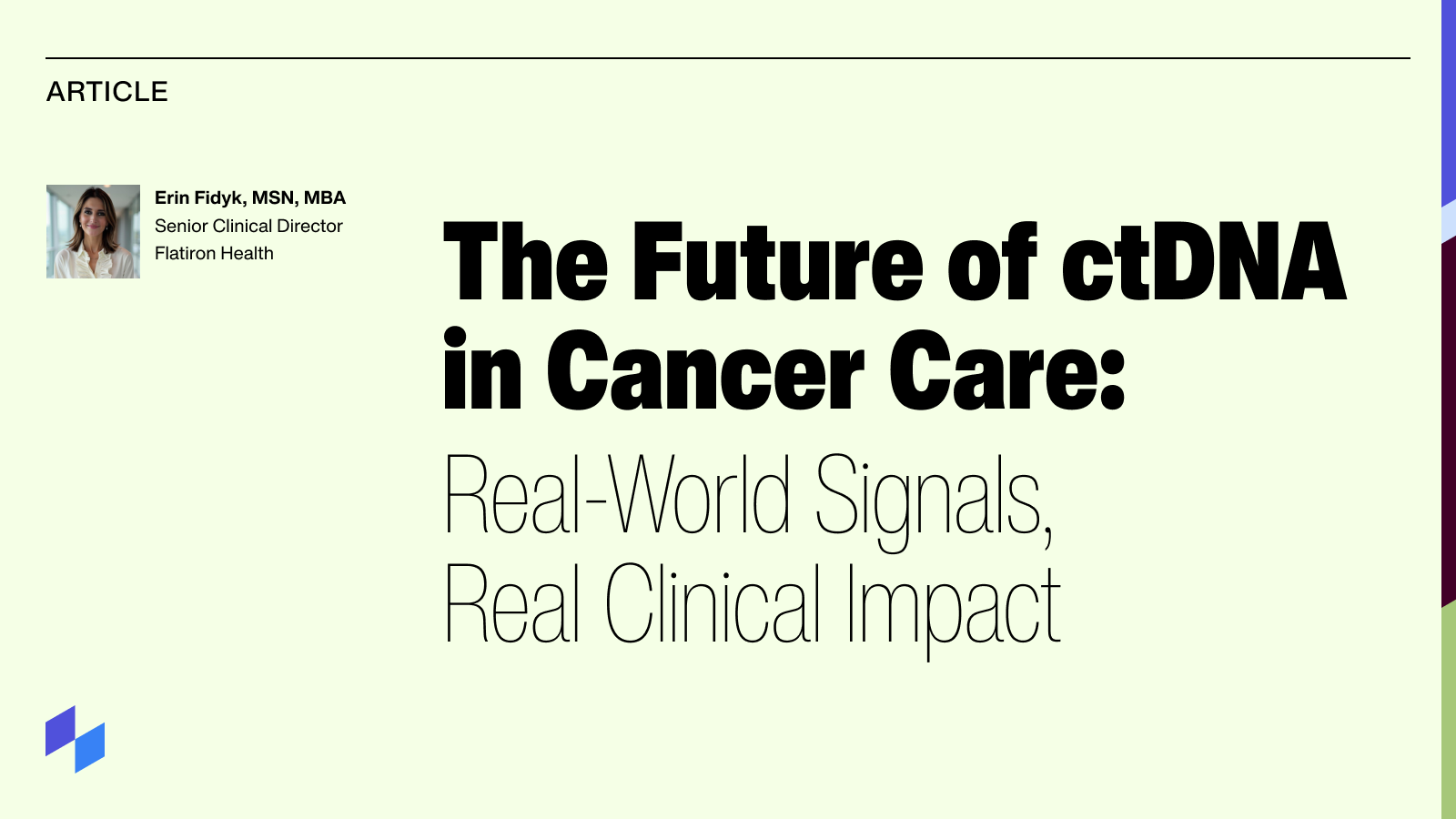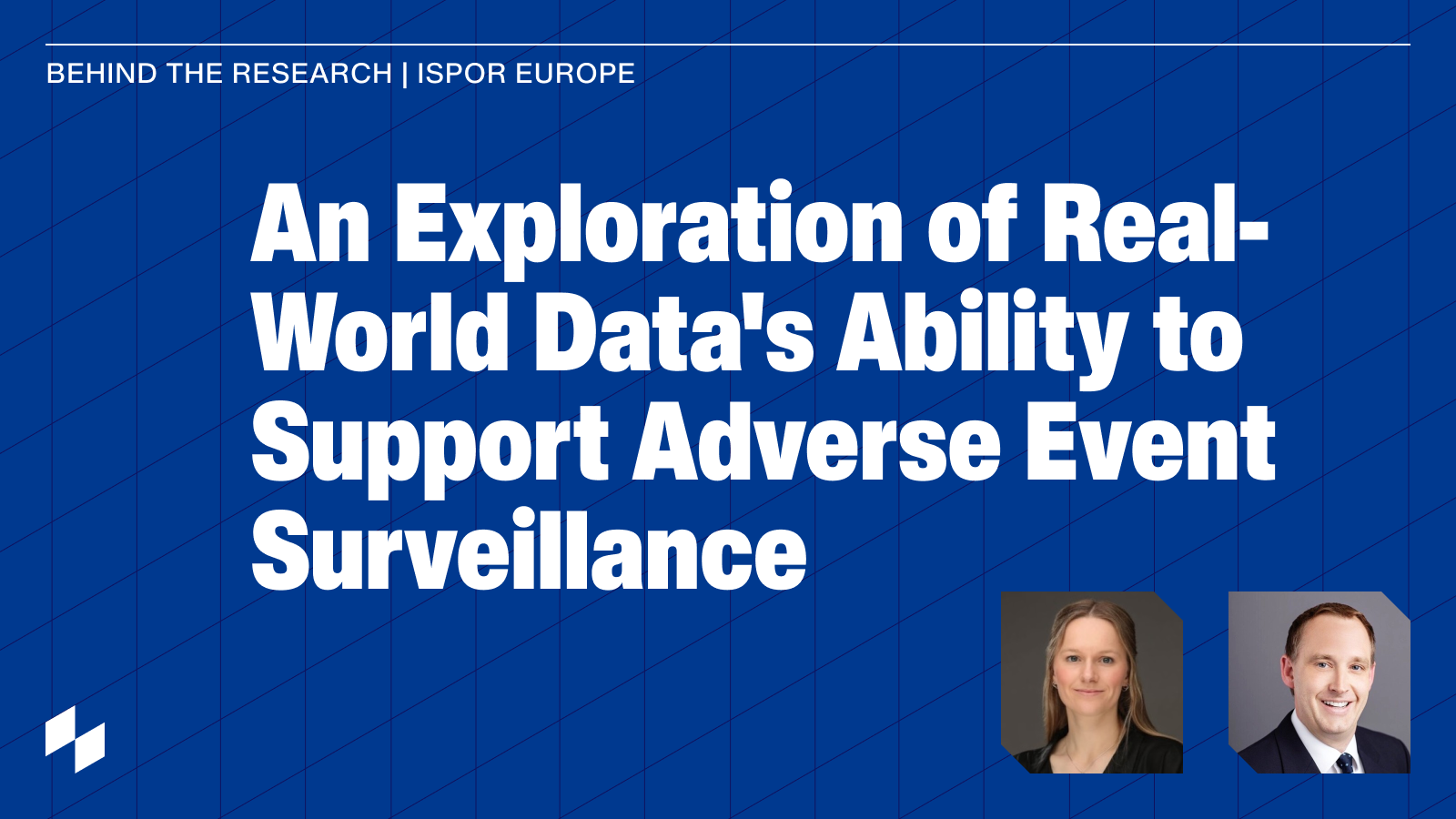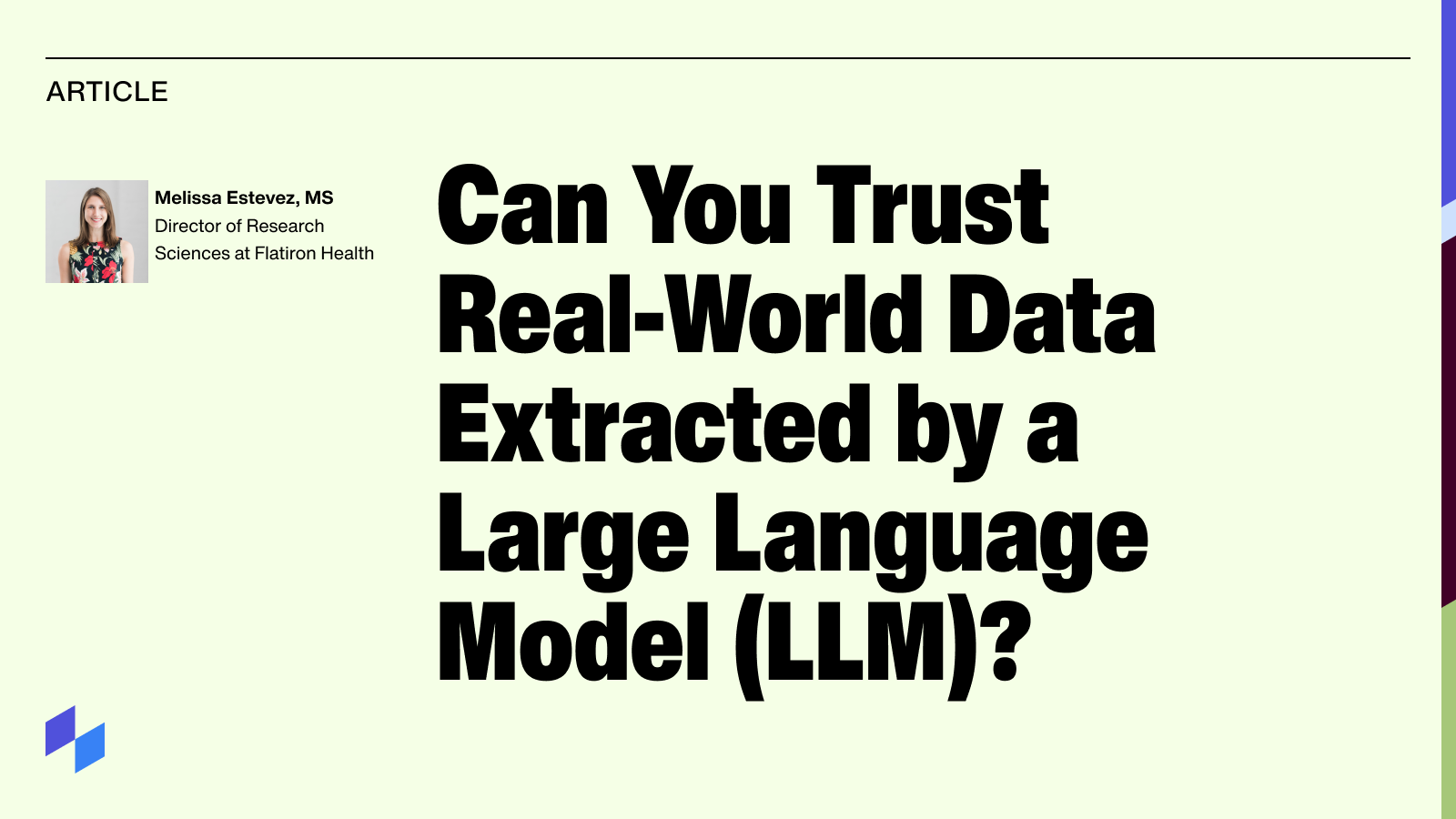Cancer research has entered an exciting new phase
Breakthroughs in our understanding of cancer biology are leading to many important innovations, and research centers and biopharma companies around the world are hard at work developing promising new drugs for a growing number of indications. In 2023 alone, the FDA approved 45 new oncology therapeutics, many involving first-in-class molecules.
To keep up with demand in a fast-changing world, life science companies are increasingly relying on real-world evidence (RWE) solutions to support and streamline their operations at every stage:
• Research: Uncovering unmet needs, prioritizing assets or refining their company’s overall portfolio strategy, among many other research-related use cases
• Development: Designing study protocols, identifying suitable I/E criteria, selecting enrollment sites and other activities leading up to regulatory submissions
• Commercialization: Performing tasks like HEOR analysis, understanding clinical effectiveness, assessing post-marketing commitments and requirements or optimizing dosing for label expansion
Flatiron has extensive experience supporting breast cancer research in partnership with biotechs and top pharmaceutical companies. Let’s examine three recent customer stories to illustrate the critical role that RWE can play at every step of the oncology development life cycle.
Research: Demonstrating unmet need in HR+/HER2- patients
Flatiron RWE was used to uncover an unmet need for additional treatment options in patients diagnosed with early breast cancer (EBC) and at high-risk for recurrence.
Female breast cancer is the most commonly diagnosed cancer in the United States. In 2023 alone, nearly 300,000 new cases and over 40,000 deaths were attributed to breast cancer, according to the NIH’s official SEER statistics. While the vast majority of new cases are detected early and despite the availability of robust curative treatment options like primary surgery, radiation, chemotherapy, and adjuvant endocrine therapy (AET), nearly 30% of patients diagnosed with EBC experience breast cancer recurrence, often with distant metastases.
The most common breast cancer subtype is hormone receptor (HR) positive, human epidermal growth factor receptor 2 (HER2) negative. An oft-quoted analysis by the National Cancer Institute found that the HR+/HER2- subtype accounts for nearly three out of every four patients with early breast cancer. This study focused on that large subgroup and used the Flatiron database to select patients diagnosed with HR+/HER2- EBC who had documentation of definitive surgery, adjuvant endocrine therapy (AET) and at least six months of follow-up.
We assessed invasive disease-free survival (IDFS) and distant relapse-free survival (DRFS) between high-risk and non high-risk patients1, and found that the rate at which EBC patients experienced invasive disease recurrence or death within two years of initiating AET was 4-5 times higher for those with high-risk clinicopathologic features. That high-risk cohort represents 13.8% of HR+/HER2- patients, or about 30,000 cases every year. This is a sizable unmet need and a strong incentive to investigate novel adjuvant therapies like CDK4/6 inhibitors for patients at high-risk of recurrence.
Development: Optimizing a triple-negative breast cancer trial protocol
Flatiron RWE was used by a large biopharma sponsor to optimize a trial protocol for triple-negative breast cancer therapy.
According to statistics from the National Cancer Institute, the the triple-negative breast cancer subtype (TNBC, or HR-/HER2-) accounts for over 12% of all EBC diagnoses and tends to occur at a greater rate among non-hispanic black women. Those patients are more likely to present with high-grade disease and less likely to be diagnosed at older ages. It’s absolutely crucial that they not be underrepresented in clinical studies.
In this study, the sponsor wanted to assess the impact of expanding inclusion and exclusion (I/E) criteria for the TNBC population in a historic trial to facilitate enrollment and develop best practices for future trials. However, the sponsor wanted to ensure that expanding I/E criteria would not distort the trial’s outcomes or negatively affect population diversity. The research team used Flatiron’s high-quality, deeply curated real-world data to analyze the effect of relaxed I/E criteria on the distribution of patient demographics and clinical characteristics.
By expanding inclusion criteria related to ECOG, eGFR, CrCl2 and hemoglobin, the total number of eligible patients increased by 37% overall and 40% among non-hispanic black patients with TNBC, without substantially affecting median real-world overall survival (rwOS). For instance, rwOS was 15.7 months among patients who met the original eGFR criteria of ≥ 60 ml/min/1.73m2, and 15.3 months when that criteria was expanded to >30 ml/min/1.73m2.
As a result, the study sponsor was able to identify 17 US community oncology research sites with a high volume of potentially eligible patients. These findings have major implications for clinical researchers interested in optimizing their study protocols, from I/E criteria to site selection and patient enrollment.
Commercialization: Differentiating within a competitive asset class
Flatiron RWE was leveraged to assess clinical benefit, toxicity, and inform post-progression sequencing for CDK4/6 inhibitors.
There are currently three FDA-approved CDK4/6 inhibitors used to treat HR+/HER2-metastatic breast cancer (mBC): palbociclib, ribociclib and abemaciclib. Abemaciclib has also received approval by the United States Food and Drug Administration (FDA) as adjuvant therapy for patients with HR+/HER2- node-positive EBC at high risk of recurrence, and ribociclib has been shown to significantly improve IDFS in patients with HR+/HER2- EBC when compared with an aromatase inhibitor alone. This is a competitive space where each drug has a different dosing, schedule and toxicity profile, but very few trials have compared CDK4/6 inhibitors to one another, even though they have all been in-market since 2017.
Flatiron provided new, clinically meaningful insights associated with these therapies, in particular real-world response rate (rwRR) and real-world progression-free survival (rwPFS). To ensure a fit-for-purpose solution, ten custom variables were abstracted in addition to the core clinical data model: sites of metastases, detailed orals (including drug name, start/end date, dose, dosing schedule, and discontinuation), real-world progression (rwP), real-world response (rwR), comorbidities with dates, menopausal status, endocrine status, disease burden, reasons for treatment discontinuation, and estrogen receptor 1 (ESR1) details. Flatiron’s real-world data is well suited for such an analysis because it spans the patient journey for 1L mBC CDK 4/6i-treated HR+/HER2- patients.
This study confirmed the value of EHR-derived RWE to perform comparative in-market analysis and inform post-progression treatment decisions. This is particularly useful at a time when many more patients might become eligible for CDK4/6 inhibitors and other novel targeted therapies.
Diverse needs require tailored solutions
Biopharma companies have a wide range of evidence needs that can benefit from tailored data and analytics solutions, from early research and development to regulatory submission and in-market analysis.
While top-quality data forms the basis of modern RWE solutions, it’s important to remember that it’s not all about the data. At Flatiron, we have a large team of expert biostatisticians, epidemiologists, and data scientists who are intimately familiar with real-world data—we collect most of it ourselves—and our in-house oncology clinicians are leading specialists across all major tumor types.
We don’t just know how to extract and analyze data, we also know how to support your study design and interpret results from a clinical perspective.
There’s no one-size-fits-all solution that can meet the industry’s evidence needs across all research questions. In breast cancer research specifically, the landscape is constantly evolving with treatments approved in the metastatic setting moving into earlier lines of treatment and new targeted therapies entering the advanced setting. With 730,000 breast cancer patients in its network, Flatiron can power more breast cancer studies than ever before with cohorts that enable greater breadth and depth of analysis.
1High-risk defined as: ≥ 4 positive axillary lymph nodes (ALN), or 1-3 positive ALN and ≥ 1 of the following: grade 3, tumor size ≥ 5 cm, or Ki-67 ≥ 20%
2eGFR = Estimated glomerular filtration rate; CrCl = Creatinine clearance




